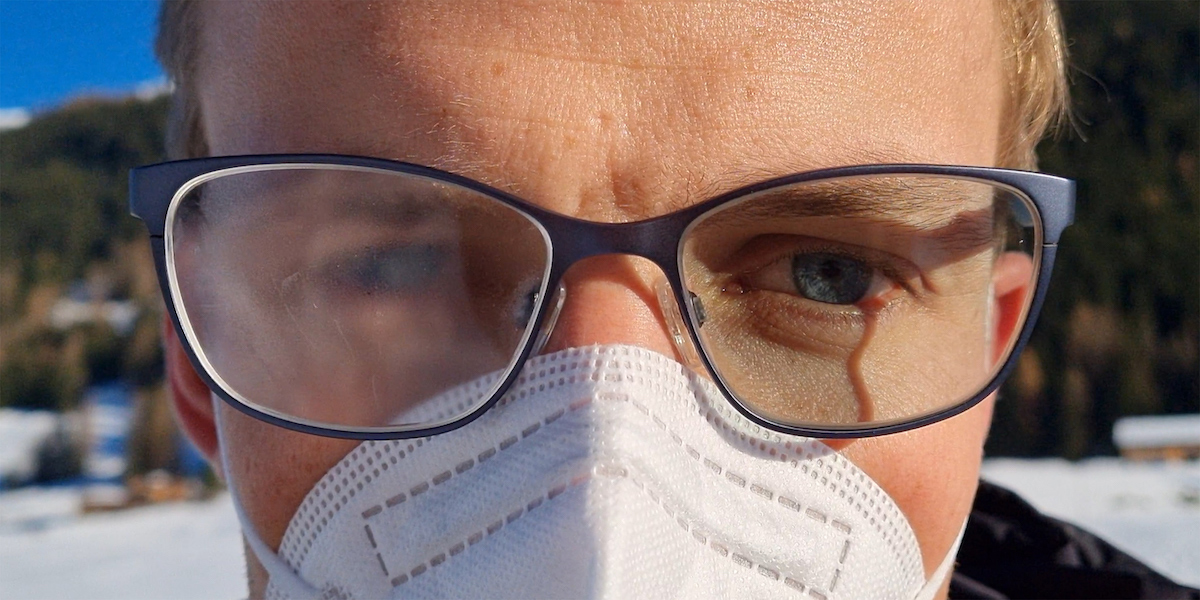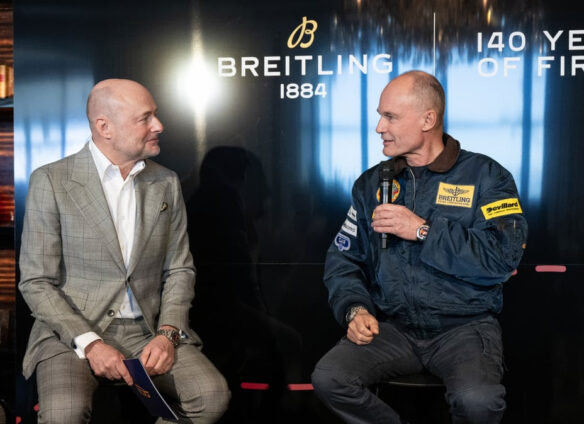Tokyo (SCCIJ) – Foggy glasses are a real inconvenience, exacerbated by masks and the cold weather. Swiss researchers have now developed a special kind of nanocoating to ensure clear vision. This technology could also be applied to car windshields.

In winter, face masks can lead to fogged glasses. Here, the left lens (right from the reader’s perspective) has the new antifogging nano-coating. The other lens is uncoated (Photograph: ETH Zurich).
Researchers at the Swiss Federal Institute of Technology (ETH) in Zurich have developed an ultrathin, gold-based transparent coating that can convert sunlight into heat. It can be applied to glass and other surfaces to prevent them from fogging. This research project received funding from the Swiss National Science Foundation.
The research group led by ETH Professors Dimos Poulikakos and Thomas Schutzius points out that their coating is fabricated with methods that are used extensively in manufacturing. In a cleanroom and using vapor deposition under a vacuum, minute amounts of gold are deposited onto the surface. ETH Zurich has applied for a patent on the coating.
High efficacy
Gold might be expensive, but the researchers emphasize that their coating requires so little that the material costs remain low. The coating comprises minuscule, extremely thin clusters of gold sandwiched between two ultrathin layers of titanium oxide, an electrically insulating material.
Due to their refractive properties, these two outer layers increase the efficacy of the heating effect. Moreover, the top layer of titanium oxide acts as a finish that protects the gold layer from wear. This whole “sandwich” is just 10 nanometers thick. By way of comparison, a common gold leaf is twelve times thicker.
Infrared radiation
What’s special about the new coating is that it absorbs solar radiation selectively. Half of the energy contained in sunlight resides in the infrared spectrum, and the other half in the visible light and UV radiation spectrum. “Our coating absorbs a large proportion of the infrared radiation, which causes it to heat up – by up to 8 degrees Celsius,” explains ETH doctoral student Iwan Hächler, who was a driving force behind the development. It absorbs only a minor fraction of the radiation in the visible range, which is the reason why the coating is transparent.
The new coating takes an approach that differs from conventional antifogging methods. Traditionally, surfaces are coated with water-attracting (hydrophilic) molecules, which results in an even spread of condensation. This is how antifog sprays work. But the new method instead heats the surface, thus preventing humidity-induced condensation from forming there in the first place. It’s the same principle as is used for a car’s rear window. But, as Hächler points out, electric heating is inefficient and energy wasteful. In contrast, the new coating is heated passively and requires, during the daytime, no additional energy source.
Text: ETHZ/Fabio Bergamin





























